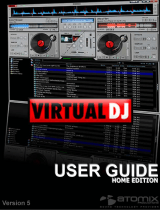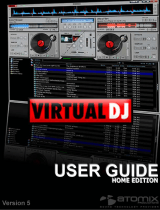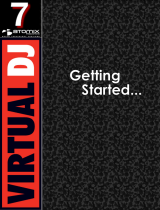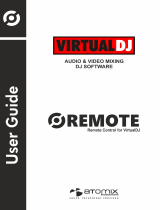
2/34 - User Manual
ii) Changing a Cue point position ............................................... 18
iii) Going to a Cue point .............................................................. 18
iv) Deleting a Cue point ............................................................... 18
6) BEAT MATCHING MUSIC FILES ......................................................... 19
a) Sync button ...................................................................................... 20
b) Pitch fader (and Master Tempo) ...................................................... 20
i) Master Tempo ........................................................................ 20
ii) Pitch scale .............................................................................. 21
iii) Centre detent ......................................................................... 21
iv) Action of the pitch fader in VirtualDJ ...................................... 21
c) Pitch Bend buttons (Pitch Bend - and Pitch Bend +) ........................ 22
i) Using the Pitch Bend function ................................................ 22
ii) Mapping the Pitch Bend function ............................................ 22
iii) Viewing the action of Pitch Bend in VirtualDJ ......................... 23
d) Jog wheels ....................................................................................... 24
7) LOOPS, EFFECTS AND SAMPLES ..................................................... 25
a) Loops ............................................................................................... 25
i) Definition ................................................................................ 25
ii) Mapping the Loop function ..................................................... 26
iii) Procedure ............................................................................... 27
iv) Tips ........................................................................................ 27
b) Sampler ........................................................................................... 28
i) Function ................................................................................. 28
ii) Procedure ............................................................................... 28
iii) Key mapping .......................................................................... 28
iv) Tips ........................................................................................ 29
c) Backspin .......................................................................................... 30
d) Overloop .......................................................................................... 30
e) Beatgrid ........................................................................................... 30
f) Brake ............................................................................................... 31
g) Flanger ............................................................................................. 32
h) Flipping double ................................................................................ 32
i) Mic Flanger ...................................................................................... 32
j) Mic Chorus ....................................................................................... 33
k) Mic Reverb ....................................................................................... 33
l) Mic Voice Pitch ................................................................................ 33
m) Scratching ........................................................................................ 34
i) Scratch mode ......................................................................... 34
ii) Action ..................................................................................... 34
iii) Tips ........................................................................................ 34
























